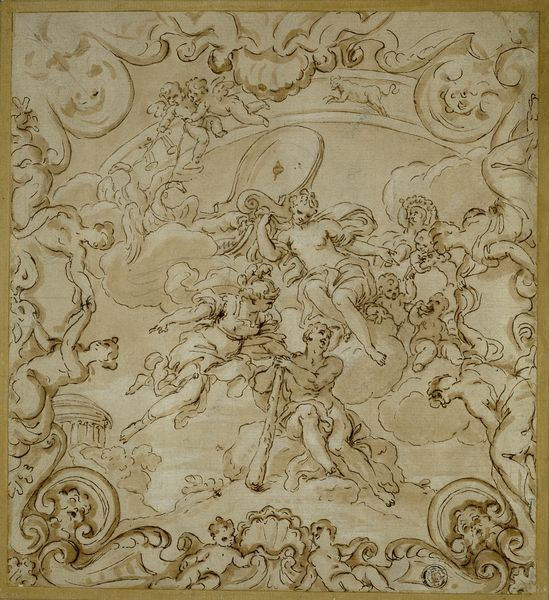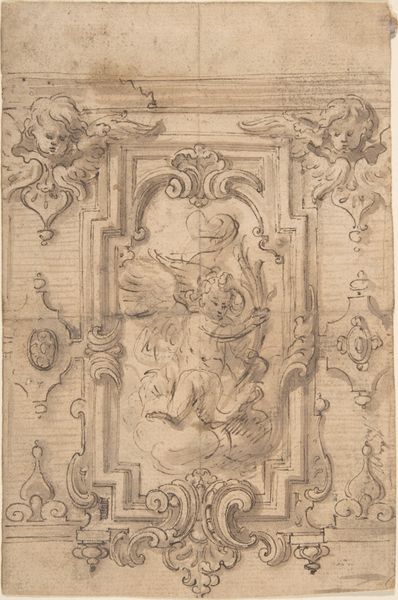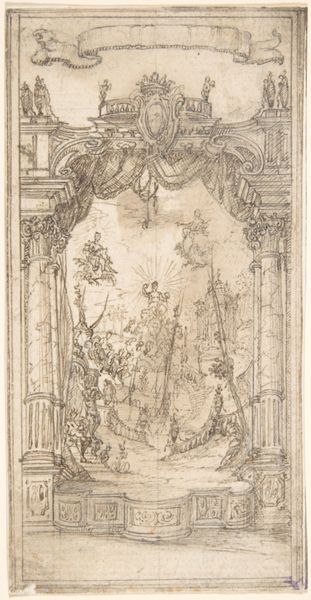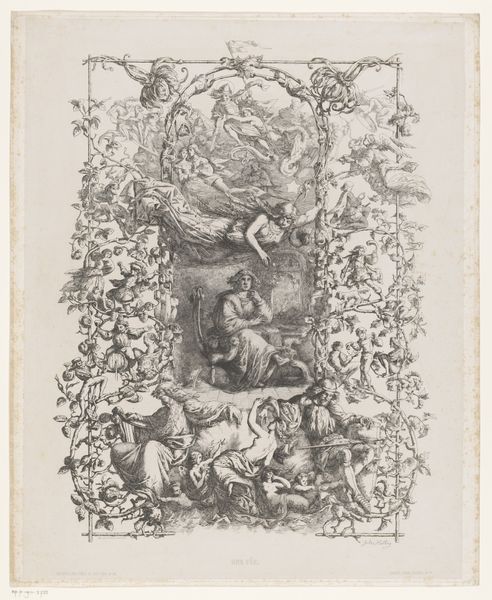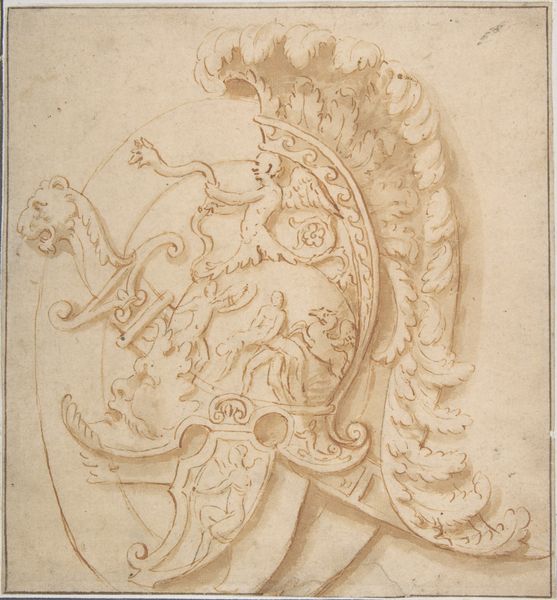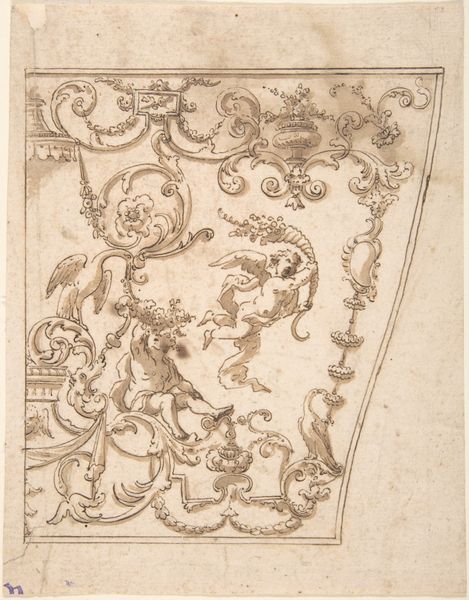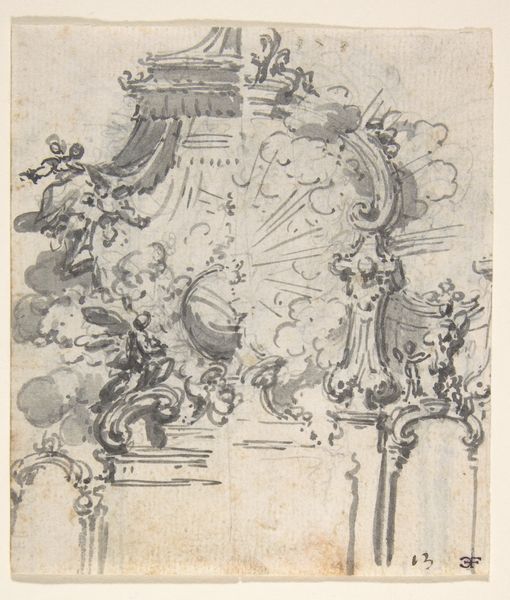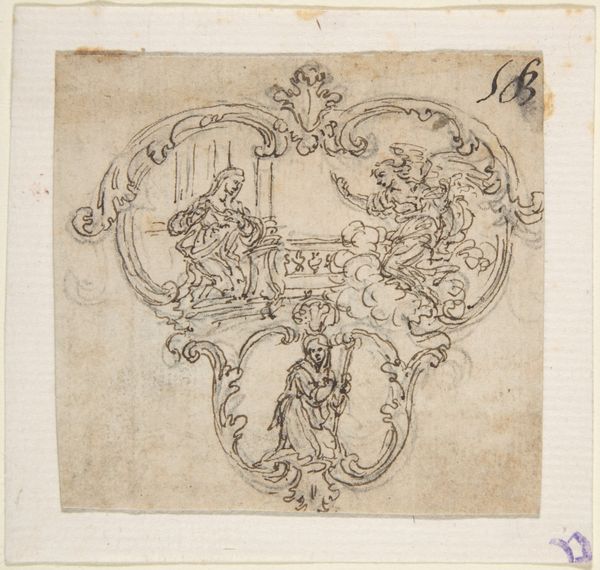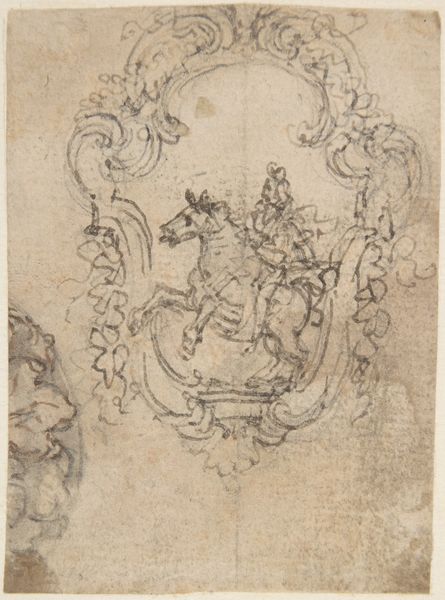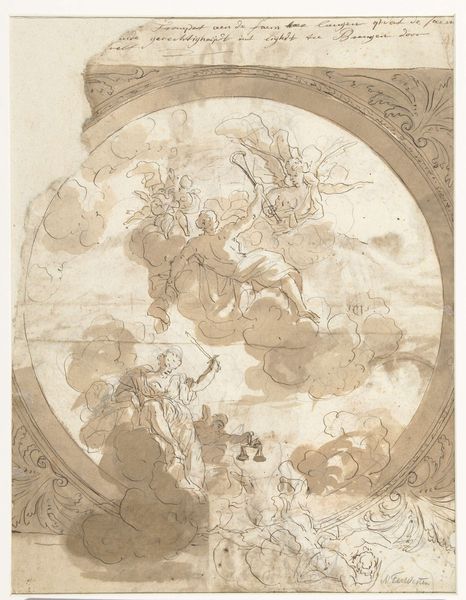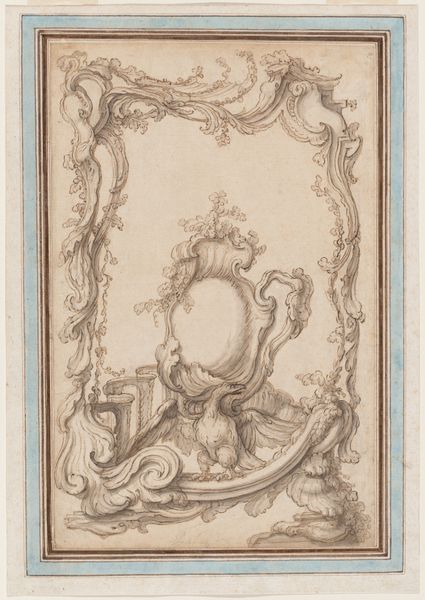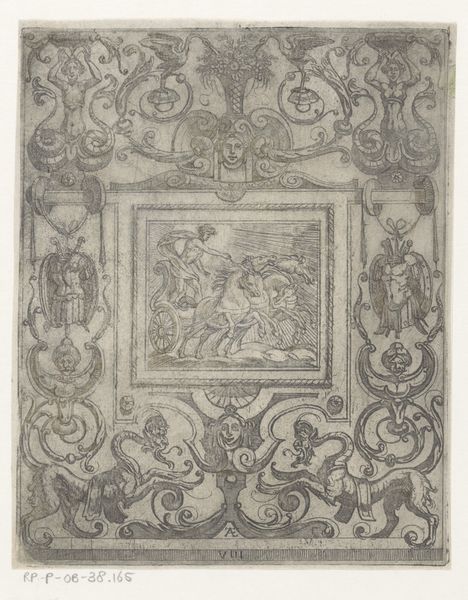
Design for a Ceiling with the Allegory of Dawn 1640 - 1700
0:00
0:00
drawing, print, ink
#
drawing
#
allegory
#
baroque
# print
#
figuration
#
ink
#
line
#
history-painting
Dimensions: sheet: 9 7/16 x 7 1/2 in. (24 x 19 cm)
Copyright: Public Domain
Curator: Welcome to the Metropolitan Museum of Art. We’re standing before a preparatory drawing, "Design for a Ceiling with the Allegory of Dawn." Created anonymously between 1640 and 1700, this ink drawing gives us a glimpse into the artistic process of the Baroque period. Editor: My first thought is lightness and airiness. Despite being a detailed drawing, it feels like it could float away. There's a dynamism in the figures and the framing ornamentation which gives it an otherworldly presence, very hopeful. Curator: Absolutely. It was meant to be hopeful. Allegorical scenes like this one were incredibly popular, adorning ceilings of palaces and churches, proclaiming wealth, power, and divine favor. Here, Dawn, a female figure surrounded by putti, emerges bringing light. Editor: Dawn as a woman is fascinating. This imagery reinforced gender roles by linking the concepts of dawn—of a new day and enlightenment with the feminine. And the inclusion of cherubic putti adds a layer of almost saccharine innocence and beauty to the overarching idea of rebirth. Were these ceilings seen as instructional? Curator: Without a doubt. The visual language of allegory was widely understood, educating the public, even the illiterate, about complex religious and philosophical ideas. Art served as propaganda, if you will. Dawn overcoming the darkness of night represents knowledge and faith triumphing over ignorance. Editor: And while light overcoming darkness sounds optimistic, thinking about these visual symbols and who they are made *for* adds more dimensions. If the elite in palaces were commissioning and consuming this kind of imagery, its messaging probably reinforced power imbalances for the rest of the population. Curator: Exactly, these magnificent interiors were reserved for a select few. They strengthened the position of both the Church and wealthy families by illustrating the divine and natural order in which they belonged at the top. It's important to also recognize the level of artistry required to create such a preliminary sketch like this one, or later the grand painted ceilings themselves. Editor: Considering this was probably viewed while lying down, it is really wonderful to observe such a drawing up close, letting the dynamism communicate its ideas centuries after it was conceived. The Baroque was always meant to impress. Curator: Indeed, a testament to skill and to power. Thank you for joining me. Editor: My pleasure.
Comments
No comments
Be the first to comment and join the conversation on the ultimate creative platform.
